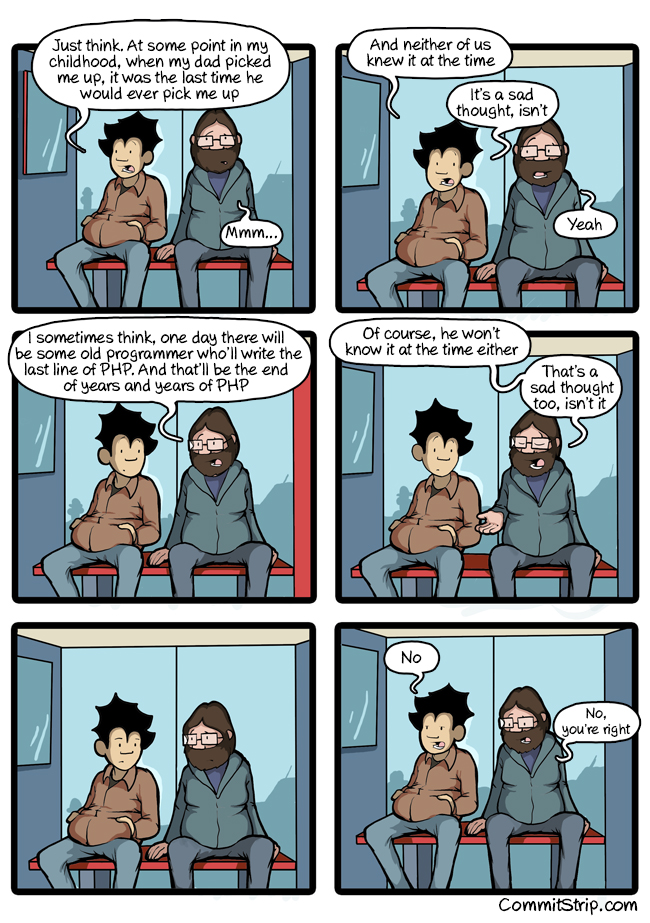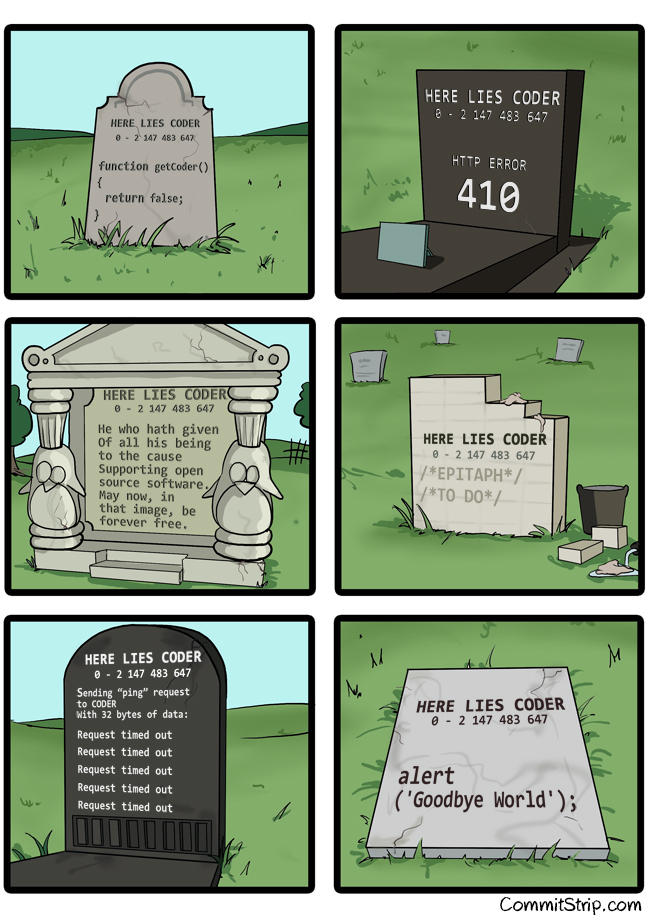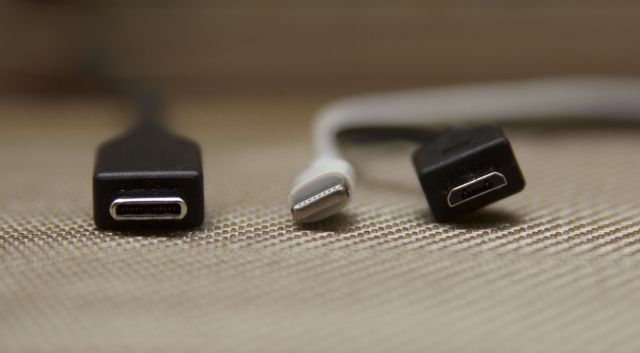
The author embodies YA's past and signals its future.
Last week's New York Times bestseller list of young adult titles was dominated by a single name — and for the first time in recent memory, that name wasn't "John Green."
Rainbow Rowell is the author whose works ranked No. 1, 4, and 5 on the Times's October 25 list of Young Adult Hardcovers. Her newest, Carry On, just debuted at the top of the list, followed, respectively, by 2013's Eleanor & Park and Fangirl, the latter of which inspired Carry On.
This Rowell triple take is especially notable in the wake of a recent restructuring of the Times's young adult list, which now separates paperbacks and hardcovers and splits children's books into "young adult" and "middle grade," and combines individual books in a series (like Veronica Roth's perennially popular Divergent series) under one heading. All of this means it's more difficult for a single author or series to dominate than it was just a few months ago — and yet that's exactly what Rowell has done.
That one-two-three punch confirms Rowell as one of the biggest names in so-called "literary YA," the term often applied to non-genre young adult writing that places a high value on style and craft.
But such nebulous (and, frankly, elitist) labels are not useful in explaining Rowell's appeal. Her voice is welcoming and inclusive; she's primarily interested in interpersonal relationships, but she's also strongly influenced by genre writing and fan fiction, and has been vocal in her admiration for YA mega-franchises like the Harry Potter and Twilight books — both of which had a pronounced influence on Carry On.
Rowell's success is indicative of the changes mainstream young adult fiction has undergone in the past half-decade. These changes are often attributed to Green's massive success with The Fault in Our Stars and other books, but they also speak to the form's broader ascendency, to the point where "young adult" is ceasing to be an effective label.
"Old" adults read as much — and possibly more — YA fiction than actual young adults, and authors like Rowell and Green (and many others) aren't writing down to appeal to younger audiences. They're simply writing from the viewpoint of teenagers, which is really the only useful definition left to describe YA fiction.
Rowell's success is interesting in the way it both reflects YA's recent history and challenges perceptions of the genre. Here's what you need to know about her, her delightful books, and what those books say about the current state of YA.
Rainbow Rowell didn't set out to write YA
Rowell's debut novel, 2011's Attachments, is not considered YA; it's a workplace romance set in a newsroom (Rowell used to be a columnist at the Omaha World-Herald). Told in part through inter-office emails between two women friends, it's a breezy, thoroughly charming read that you can finish in a few sittings, but by virtue of it centering on adult characters, it's considered adult fiction.
Her follow-up and breakout hit, Eleanor & Park, functions at the same basic reading level as Attachments, but because it centers on the two titular teenage characters — a pair of outcasts living in Omaha in 1986 — it was classified as YA. Rowell has said she didn't think of Eleanor & Park as being young adult fiction when she was writing it, and that there was some contention over the label before and after the book was published.
Nonetheless, the New York Times named Eleanor & Park one of its "Notable Children's Books" of 2013, and it received recognition from the Association for Library Service to Children and the Young Adult Library Services Association. Eleanor & Park firmly established Rowell as a "YA author," and her next novel, Fangirl, which centers on college-age characters, was also classified as YA.
When Rowell followed up Fangirl with 2014's Landline, a novel centered on a troubled marriage, the book was characterized as a return to her non-YA roots. But Landline's presumed audience isn't what made Landline a departure for Rowell. The book's inclusion of slight supernatural elements and its move away from Rowell's preferred setting of Nebraska distinguish it from her previous works, but in terms of style, voice, and length, it's right in line with the rest of her bibliography.
Ultimately, there's no major difference in reading level, or really even thematic content, between Rowell's "adult" and "young adult" efforts. Her voice transcends such classifications, and reveals them to be little more than marketing tools.
Rowell's YA bona fides stem in part from her association with John Green
It's difficult to tell the full story of Rowell's ascendance without mentioning The Fault in Our Stars author and YA powerhouse John Green — but it's also frustrating to do so, considering that Green's dominance and influence in the YA field tends to overshadow other writers in the public imagination.
But the fact remains that Green gave Eleanor & Park a glowing review in the New York Times, leading to what's known as "the John Green bump." The book subsequently became a bestseller, permanently linking Rowell's success to Green's endorsement. (Green's kingmaker reputation is reminiscent of Stephen King's back in the mid-1980s, when a blessing from the author resulted in an automatic rise in profile for up-and-coming horror writers like Clive Barker.)
Rowell is far from the only writer to benefit from Green's public admiration — E. Lockhart (We Were Liars) and A.S. King (Reality Boy) are two other recent examples — but the lumping together of Green and those he endorses tends to buff out the distinctions between these writers and their works, gathering them under the inaccurate umbrella of "John Green-esque."
The rise of so-called "GreenLit," meaning realistic, self-aware stories about teenagers, is often characterized as a reaction to the influx of paranormal romance and dystopian fantasy stories that popped up in the wake of Twilight and The Hunger Games' multimedia success — as if personal stories of teen alienation haven't existed since at least Catcher in the Rye (a book, incidentally, that Green also endorses). But Rowell's work, while generally in keeping with a more personal vein, does not specifically reject those trends; again, she's a vocal fan of fantasy and science fiction, and a supporter of the passionate fandoms generated by franchises like Harry Potter and Twilight. Her writing reflects that.
Rowell's vocal fandom is a big part of her appeal
Very important to bring your Harry Potter book to your birthday dinner at the hibachi grill. pic.twitter.com/VCqRu6cuHV
— Rainbow Rowell (@rainbowrowell) April 24, 2015
If you’re going to a bar on a Friday night, make sure to charge your phone. (So you can hide in a corner and read fanfiction.)
— Rainbow Rowell (@rainbowrowell) July 27, 2013
Rowell's respect for genre and its attendant fandoms is most evident in Fangirl, a lovely coming-of-age story about a college freshman, Cath, who expresses herself by writing fan fiction of a thinly disguised Harry Potter analogue named Simon Snow.
The book intersperses Cath's point-of-view narrative with excerpts from her long-running fanfic, titled "Carry On, Simon." "Carry On, Simon" — which in Fangirl is the Simon Snow story among fanfic readers — belongs to a subsection of fanfic known as slashfic that focuses on romantic relationships between characters of the same sex, usually male.
"Carry On, Simon," which pairs Simon Snow with his roommate and nemesis, named Baz, is an obvious analogue of the popular slashfic pairing of Harry Potter and Draco Malfoy, with an addition — Baz is a vampire — that also nods to the Twilight books.
Cath's voice marks her as a Rainbow Rowell character: introspective, witty, and emotionally driven, with a quirky outlook that places her outside the mainstream. (Eleanor & Park's titular characters also neatly fit this description.) But Cath's specific interests also mark her as a Rowell surrogate, a personification of the fulfillment and joy you can get out of loving something so hard that it compels you to create something of your own.
Carry On merges YA's two dominant modes into something different and refreshing
While "Carry On, Simon" is just one element of Fangirl — functioning as a symbol for Cath's isolation and frustration as she enters college — Carry On expands Cath's fictional story into a complete narrative.
That makes Carry On a real novel based on a fictional fanfic that's based on real novels. It's an ouroboric relationship, one that pays tribute to two of the biggest properties in YA and their passionate fandoms, while also affording Rowell the opportunity to inject her own style into the type of genre-based YA she admires but until now hasn't written in.
What's most remarkable about Carry On, though, is that it still falls in line with Rowell's previous works, even while parroting genres that are new to her bibliography.
Interpersonal relationships are the bedrock of Rowell's writing, taking precedence over the world building and complicated plot machinations that characterize the Harry Potter books. Carry On reflects that interest, focusing on Simon and Baz's — who, remember, are essentially Harry Potter and Draco Malfoy stand-ins — gradual realization that their mutual attraction is based in something more than hatred; the details of the book's magical world are secondary to their story, and are often pointedly silly. (For example, spells in Carry On's magical world are predicated on the popularity of clichéd phrases; the more common a saying, like "a little bird told me" or "hair of the dog," the more powerful its attendant spell.) Rowell is playing in the sandbox J.K. Rowling constructed with the Harry Potter books, relying on readers' familiarity with that world to fill in the blanks so she doesn't have to divert from the emotional meat of her story — which is exactly what fan fiction does.
Carry On's imaginative melding of genre-based YA and so-called "literary YA" is incredibly fun and readable, even for readers who haven't been primed by Fangirl. But Rowell's book also mirrors the ways the various borders distinguishing the different sects of YA are becoming blurrier and less useful.
The presumed popularity of one type of YA story over another is a fiction, based more on marketing trends (and movie deals) than on what's actually available on shelves. The "recommended if you like" model can be useful, but only to an extent, and has the potential to pigeonhole books, like Carry On, into definitions they don't comfortably fit.
Rowell and Carry On are helping bust the outdated, inaccurate idea of trend-based YA
When asked for writing advice by Novelicious, Rowell's No. 1 tip was, "Don’t worry even a little bit whether your book is on trend. All the trends will be trending differently by the time you get published, so it’s pointless to overthink it while you’re writing." It's smart advice for writers, but also for readers and those who think of YA as a trend-dependent entity.
The idea that fantasy-based YA was displaced by supernatural romance YA was displaced by dystopian future YA was displaced by "GreenLit" is facile and irrelevant to the way most people consume books and other entertainment. People can like lots of different things, at the same time, and for years and years after they've gone out of fashion.
Assuming and promoting the idea that one type of fiction is the dominant mode not only disrespects readers who may continue to love something years after it's "on trend," it also disrespects the individual writers doing great work outside that mode. By combining different prominent YA modes in Carry On, Rowell is reflecting the sort of individualized, multidisciplinary approach that is making YA literature — and by extension, contemporary literature as a whole — more interesting than it's been in a long time.
Rowell's current compatriots on the Times's bestseller list are a diverse bunch, comprising high fantasy (Neil Gaiman's The Sleeper and the Spindle), a supernatural-dystopian hybrid (Victoria Aveyard's Red Queen), a couple of meta takes on the supernatural teen/Chosen One genre (Patrick Ness's The Rest of Us Just Live Here and Scott Westerfield's Zeroes), and a quintessential "recommended if you liked The Fault in Our Stars" book (Nicola Yoon's Everything, Everything).
It's impossible to extrapolate a strong trend from this group; indeed, it's a mishmash of all the trends that have come before, each striking out in a different direction that isn't necessarily beholden to "what's hot right now."
While Rowell's star is shining particularly bright at the moment, hers is just one point on a diverse tapestry of current young adult literature. (Well, three, if you want to get technical.)
And that's the way it should be: No one approach or style should define an entire field, particularly one that thrives on inclusiveness and inventiveness as much as fiction does. Rowell's output respects diversity and individuality more than it respects trends, which makes her dominance on the bestseller list a heartening sign for YA's future.





 Every year the United States Trade Representative (USTR) inventorizes what problems local industries face when doing business abroad.
Every year the United States Trade Representative (USTR) inventorizes what problems local industries face when doing business abroad. 





/cdn0.vox-cdn.com/uploads/chorus_asset/file/4222305/bittman-purple-carrot.jpg) Purple Carrot/Grist
Purple Carrot/Grist
/cdn0.vox-cdn.com/uploads/chorus_asset/file/4222309/pc_markandy2.jpg) Purple Carrot/Grist
Purple Carrot/Grist











